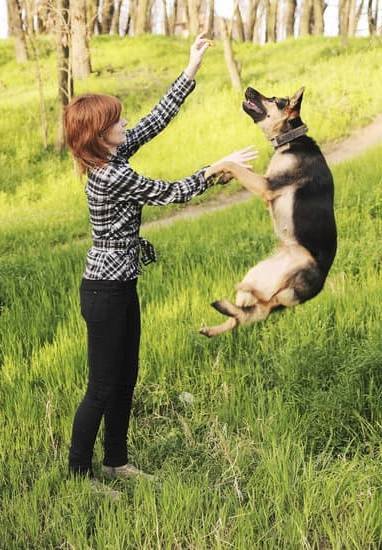Kennel training has become a popular method of dog training, but is it truly beneficial for our furry friends? In this article, we will delve into the concept of kennel training and explore its advantages and potential drawbacks.
In the first section, “Introduction: Understanding the Concept of Kennel Training,” we will provide a comprehensive overview of what kennel training entails. From crate selection to creating a comfortable environment, we will discuss the key aspects necessary to implement this training method effectively.
Next, we will explore “The Benefits of Kennel Training for Dogs: Exploring the Positives.” It is important to understand why so many dog owners choose this approach. We will highlight how kennel training can aid in housebreaking, prevent destructive behaviors, and promote security and comfort for dogs.
Additionally, we aim to debunk common misconceptions about kennel training in our third section. Many individuals believe that crate confinement is cruel or inhumane. However, we will address these concerns and shed light on why when done correctly, kennel training can actually enhance a dog’s overall well-being.
By addressing these key points in our article introduction, readers will gain an understanding of what kennel training entails and why it has gained popularity among dog owners. Stay tuned as we continue to explore the benefits and techniques of proper kennel training in subsequent sections.
The Benefits of Kennel Training for Dogs
Kennel training, also known as crate training, has many benefits for dogs and their owners. In this section, we will delve into the specific advantages of kennel training and how it can positively impact your dog’s behavior and well-being.
One of the main benefits of kennel training is that it provides dogs with a safe and secure space that they can call their own. Dogs are den animals by nature, and a crate can mimic the coziness and security of a den in the wild. Having a designated area to retreat to can help alleviate anxiety and stress in dogs, especially during times when they need to be confined or left alone.
Another advantage of kennel training is that it helps with housebreaking. Dogs naturally want to keep their sleeping area clean, so by using a crate, you can teach them bladder and bowel control. When properly introduced to a crate as a positive and comfortable space, dogs will learn to hold their urge to eliminate until they are let out.
Furthermore, kennel training aids in preventing destructive behavior. Dogs may chew on furniture, shoes, or other household items when unsupervised or anxious. By confining them to a crate when you cannot directly supervise them, you prevent them from engaging in such destructive behaviors.
| Benefit | Description |
|---|---|
| Provides a safe space | Gives dogs a secure area that they can retreat to for comfort. |
| Aids in housebreaking | Dogs learn bladder and bowel control as they do not want to soil their sleeping area. |
| Prevents destructive behavior | Confining dogs to a crate when unsupervised prevents them from engaging in destructive chewing or other unwanted behaviors. |
Kennel training has numerous positive effects on dogs, and when done correctly and with the dog’s well-being in mind, it can be a valuable tool for both training and ensuring their safety. However, it’s essential to understand that each dog is unique, and while kennel training may be beneficial for most dogs, some individuals may not respond well to crate confinement.
In the next section, we will address common misconceptions about kennel training and provide information on how to properly introduce your dog to a crate.
Debunking Common Misconceptions about Kennel Training
Kennel Training is Not Cruel
One common misconception about kennel training is that it is cruel or inhumane. However, when done properly, kennel training can actually be a source of comfort and security for dogs. The key is to make the crate a positive and inviting space for the dog. By introducing it slowly with positive reinforcement, such as treats and praise, dogs can learn to associate their crate with safety and relaxation.
It’s important to note that the crate should never be used as a form of punishment. Dogs should never be forced into their crate or locked inside for extended periods of time. Kennel training is meant to provide dogs with a den-like environment where they can retreat to when they need some quiet time or want to feel secure.
Crates Are Not Small and Confined Spaces
Another misconception about kennel training is that crates are small and cramped spaces that restrict a dog’s movement. In reality, crates should be spacious enough for the dog to stand up, turn around, and lie down comfortably. It’s recommended to choose a crate size based on the adult size of the dog and use dividers if necessary to adjust the space as they grow.
The purpose of using a crate during training is not to confine the dog indefinitely but rather to create structure and establish boundaries. Dogs are den animals by nature, so having their own personal space can help them feel safe and calm. Crates also serve as useful tools for potty training purposes, as most dogs instinctively avoid soiling their sleeping area.
Consistency Is Key
One key aspect of successful kennel training is consistency. Dogs thrive on routine, so it’s important to establish a consistent schedule for using the crate right from the beginning. This includes feeding meals in or near the crate, providing comfortable bedding inside, and ensuring regular opportunities for bathroom breaks.
Consistency should also apply to the training process itself. It’s essential to use positive reinforcement techniques consistently and avoid any negative or punishment-based methods. By creating a routine that the dog can rely on and ensuring that every interaction with the crate is positive, kennel training becomes an effective and humane method for teaching dogs good behavior and helping them feel secure in their environment.
Step-by-Step Guide to Proper Kennel Training Techniques
Kennel training is a beneficial method of teaching dogs to feel secure and comfortable in their crate or kennel. By following a step-by-step guide, dog owners can effectively train their pets to see the kennel as a safe space. This section aims to provide a detailed step-by-step guide to proper kennel training techniques.
- Introduce the Kennel: Start by acquainting your dog with the kennel in a positive manner. Place treats, toys, or bedding inside the kennel to entice your dog to explore it. Allow them to enter and exit freely at first without closing the door.
- Encourage Positive Associations: Gradually associate positive experiences with the kennel by feeding your dog near it or placing their favorite toys inside. This will help them develop positive associations with being in the kennel.
- Practice Short Intervals: Begin closing the door for short periods while your dog is inside, gradually increasing the duration over time. Stay close by initially and gradually increase distance as they become more comfortable.
- Reinforce Quiet Behavior: Only open the door when your dog has remained calm and quiet for a few seconds or more. This reinforces good behavior and discourages whining or barking to be let out.
- Establish Routine: Implement a consistent schedule for putting your dog in their kennel, such as during bedtime or when you leave for work. Consistency helps them understand what is expected of them and makes them feel more secure.
- Gradual Alone Time: Once your dog is comfortable staying in their kennel with you nearby, start leaving them alone for short periods. Start with just a few minutes and gradually increase the time until they can comfortably stay alone for longer durations.
By following these steps, dog owners can successfully train their pets to see their crate or kennel as a safe space rather than associating it with negative emotions like confinement or punishment. Remember that patience is key during the training process, as every dog learns at their own pace. With consistent practice and positive reinforcement, kennel training can be highly effective in creating a sense of security and comfort for dogs.
How Kennel Training Can Foster a Sense of Security and Comfort for Dogs
Kennel training can provide dogs with a sense of security and comfort, making it an effective method for creating a safe space for them. When properly trained and introduced to their kennels, dogs often view it as their own personal den, similar to the small, enclosed spaces where their ancestors would seek refuge in the wild. This sense of security is vital for a dog’s overall well-being, as it allows them to relax and feel protected.
One of the main reasons why kennel training fosters a sense of security for dogs is because it mimics their natural instincts. Dogs have an innate desire to seek out cozy spaces where they can rest undisturbed. By providing them with a comfortable kennel that is appropriately sized for their breed, age, and size, we are meeting this instinctual need. Additionally, having their own space helps dogs feel more in control of their surroundings, reducing anxiety and stress levels.
A study conducted by researchers at the University of Lincoln in the United Kingdom found that 84% of shelter dogs showed signs of reduced stress when provided with access to a kennel or crate. These signs included lower heart rates and decreased cortisol levels, indicating that the dogs felt more relaxed and at ease in their designated area.
The study further concluded that using kennels as safe spaces can have significant positive effects on the mental well-being of shelter dogs.
| Benefits | Data |
|---|---|
| Reduced stress levels | 84% of shelter dogs showed signs of reduced stress when provided with access to a kennel or crate (University of Lincoln) |
| Sense of security | Kennel training mimics dogs’ natural instinct to seek out cozy spaces, creating a sense of security |
Exploring the Mental and Emotional Benefits of Kennel Training
Reducing Anxiety and Separation Distress
One of the significant mental and emotional benefits of kennel training for dogs is the reduction in anxiety and separation distress. Dogs are naturally den animals, and having a kennel can simulate a den-like environment that provides them with a sense of security and comfort. When properly introduced to their kennel, dogs can see it as their safe space, similar to a bedroom for humans.
Kennel training can help dogs cope with separation anxiety when their owners are not around. By associating positive experiences with the kennel, such as treats or toys, dogs learn that being in the kennel is an enjoyable experience rather than a punishment. This association can help alleviate their stress and make them feel more at ease when left alone.
Creating a Routine and Structure
Another mental benefit of kennel training is that it helps to create routine and structure in a dog’s life. Dogs thrive on consistency, as it provides them with predictability and stability. Having a designated space like a kennel helps establish boundaries and gives dogs a sense of organization.
Through kennel training, dogs learn to understand expectations regarding potty breaks, feeding times, sleep schedules, and playtime. This routine contributes to their overall mental well-being by developing healthy habits and reducing confusion or stress caused by inconsistencies in their daily life.
Promoting Restful Sleep and Relaxation
Just like humans, dogs also need quality sleep for optimal health and well-being. Kennel training provides dogs with an excellent opportunity for restful sleep and relaxation. When properly trained to associate the kennel with comfortable slumber, dogs will automatically retreat to this space when tired.
Having a dedicated spot to rest promotes deep sleep without interruptions or distractions. It helps stimulate natural melatonin production in their bodies leading to better-quality sleep which aids in their ability to handle everyday activities and training sessions effectively. Furthermore, the sense of security that kennels provide can help dogs feel more relaxed and reduce stress levels, leading to overall improved emotional well-being.
By exploring the mental and emotional benefits of kennel training for dogs, it becomes clear that this method goes beyond mere confinement. Kennel training can be a valuable tool in creating a sense of security, reducing anxiety and separation distress, establishing routine and structure, as well as promoting restful sleep and relaxation.
It is essential for dog owners to understand these benefits in order to make an informed decision about whether or not kennel training is suitable for their furry companions.
Addressing Concerns
Kennel training has become a popular method for dog owners to provide structure, safety, and comfort for their furry friends. However, there are concerns about the potential cruelty or inhumanity of this training technique. In this section, we will address these concerns and shed light on the truth behind kennel training.
The Purpose of Kennel Training
First and foremost, it is essential to understand the purpose of kennel training. The primary goal is not to confine or punish the dog but rather to create a safe space where they can feel secure and comfortable. By providing them with their own den-like area, dogs can have a sense of ownership and a designated place to relax, sleep, or retreat when they need solitude.
The Role of Positive Reinforcement
One misconception about kennel training is that it involves leaving the dog locked up for extended periods without attention or human interaction. This couldn’t be further from the truth. Proper kennel training relies on positive reinforcement techniques, such as rewards and praise when the dog enters their crate willingly or remains calm inside it.
Additionally, gradual acclimation plays a crucial role in successful kennel training. Introducing the crate slowly by associating positive experiences with it helps dogs form positive associations and eliminates any fear or anxiety they may initially have.
Benefits for Dogs
Kennel training offers numerous benefits for dogs’ well-being. It allows them to have a designated safe space where they can escape from potentially stressful or overwhelming situations. For instance, during loud noises like thunderstorms or fireworks, dogs may seek refuge in their crates where they feel protected and secure.
Moreover, kennels prevent destructive behaviors caused by anxiety or boredom when left alone at home. A well-trained dog will view their crate as a calming environment rather than exhibiting destructive behaviors out of distress.
The Importance of Consistency and Patience in Successful Kennel Training
Consistency and patience are key components of successful kennel training for dogs. When it comes to this training method, maintaining a consistent routine and approach is crucial in helping your dog understand and adapt to their new environment. Additionally, having patience during the training process will ensure that your dog feels supported and confident as they learn to associate their kennel with safety and comfort.
One of the main reasons why consistency is important in kennel training is that it helps establish a clear routine for your dog. Dogs thrive on structure and predictability, so having a consistent schedule for feeding, exercise, playtime, and potty breaks will create a sense of security and stability for them. This routine should also include regular crate time or confinement periods in the kennel, which will help your dog become familiar with their safe space.
Consistency also extends to the rules and expectations you set for your dog when it comes to their behavior inside the kennel. For example, if you allow your dog to whine or bark incessantly without addressing it consistently every time, they may learn that such behavior will eventually get them out of the kennel. On the other hand, reinforcing positive behavior with rewards consistently will encourage them to enjoy their time in the kennel.
Similarly, patience plays an essential role in successful kennel training. It’s important to remember that each dog is unique and will require varying amounts of time to adjust to being confined in a kennel. Some dogs may take only a few days to feel comfortable, while others may need several weeks or more. Patience means understanding that setbacks can occur during this process but remaining calm and consistent in your training efforts.
During this period of adjustment, be patient with any accidents or mistakes that may happen inside the kennel. Never punish or scold your dog for soiling their enclosure, as this can create fear or anxiety around the crate. Instead, reinforce proper elimination outside of the crate and gradually increase the duration of time your dog spends inside the kennel.
Overall, consistency and patience are crucial qualities in successful kennel training. By establishing a consistent routine and rules, as well as having the patience to guide your dog through the process, you will help them feel secure and comfortable in their kennel. This will ultimately lead to a positive association with their crate and make them more relaxed and confident in various situations.
Real-Life Stories
One of the most compelling reasons to consider kennel training for your dog is the countless success stories of dogs who have thrived under this method. Many dog owners have shared their experiences and witnessed firsthand the positive impact that kennel training has had on their furry companions.
One such success story comes from Mary, a dog owner who was initially skeptical about kennel training but decided to give it a try with her anxious rescue dog, Jake. Jake had a difficult past and struggled with separation anxiety, leading to destructive behaviors when left alone.
However, after implementing a consistent kennel training routine, Mary noticed significant improvements in Jake’s behavior. He became calmer and more comfortable being alone in his crate, providing both him and Mary with much-needed peace of mind.
Another success story involves Max, a hyperactive puppy with excessive energy. His owner, Sarah, had tried numerous methods to manage his energy levels but found little success until she began kennel training. By providing Max with structured crate time throughout the day, he learned to relax and settle down more easily. This not only made Max happier and content but also allowed Sarah to have some much-needed downtime without constantly monitoring her energetic pup.
These real-life stories illustrate how kennel training can be a transformative experience for dogs facing various challenges. Whether it’s addressing separation anxiety or managing high energy levels, the consistent structure and security provided by a crate can create positive changes in a dog’s behavior and overall well-being.
Overall, these success stories highlight the effectiveness of kennel training as a tool for addressing behavioral issues and enhancing a dog’s quality of life. When implemented correctly and tailored to individual needs, this method can provide dogs with the sense of security they need while offering owners peace of mind knowing their pets are safe and content in their crates.
Alternatives to Kennel Training
While kennel training has its benefits, it may not be suitable for every dog or every owner. Fortunately, there are alternative methods of dog training that can still be effective in teaching obedience and providing a safe environment for dogs.
One alternative to kennel training is the use of baby gates or playpens. These are physical barriers that create a designated space for the dog to roam freely but within a confined area.
This allows the dog some freedom while still preventing it from accessing certain areas of the house or getting into trouble. Baby gates and playpens can be used in combination with positive reinforcement training methods, such as clicker training or reward-based training, to teach the dog appropriate behavior.
Another alternative method is crate-free training. Instead of using a kennel or crate, this approach relies on teaching the dog boundaries and rules through proper supervision and management. It involves setting up the environment in a way that prevents unwanted behaviors and promotes desirable ones. For example, using baby gates to block access to certain rooms, removing tempting items from reach, and providing interactive toys for mental stimulation can help redirect a dog’s energy and keep it occupied.
Clicker training is another effective alternative to kennel training. Clicker training is a positive reinforcement method that uses a handheld device called a clicker to mark desired behaviors. It works by associating the sound of the clicker with rewards such as treats or praise. By pairing the clicker with specific actions or commands, dogs can quickly learn what behaviors are expected of them.
Conclusion
In conclusion, it is clear that kennel training can be a beneficial tool for dog owners when done properly. By exploring the positives of kennel training, such as providing a safe space for dogs and facilitating house training, it becomes evident that this method can foster a sense of security and comfort for our furry friends. Additionally, kennel training has mental and emotional benefits for dogs, helping to reduce anxiety and build confidence.
It is important to address concerns about the perceived cruelty or inhumanity of kennel training. When implemented with consistency and patience, kennel training can actually enhance a dog’s overall well-being by giving them structure and boundaries. While it is essential to understand that every dog is unique and may respond differently to different training methods, success stories show how dogs can thrive when given the opportunity to adapt to their new environment through kennel training.
Of course, it is also crucial to consider alternatives to kennel training. It depends on the individual needs and preferences of both the dog and the owner. Exploring other methods like positive reinforcement training or crate-free alternatives may be more suitable for some dogs. Ultimately, weighing the pros and cons of kennel training will help each owner make an informed decision about what best suits their dog’s specific needs.
Frequently Asked Questions
What are the pros and cons of crate training a dog?
Crate training a dog can have several pros and cons. One advantage is that it can provide a safe and secure space for the dog, especially when they are young, still learning boundaries, or feeling anxious. It can serve as a den-like environment where they can retreat and feel comfortable.
Additionally, crate training can aid in housebreaking and teach the dog bladder control and discipline. On the other hand, crate training may be seen as cruel or inhumane by some people if misused or overused. Dogs need plenty of social interaction, exercise, and mental stimulation throughout the day, so confining them to a crate for extended periods without breaks could lead to frustration, boredom, or anxiety.
Is it good for a dog to be in a kennel all day?
It is generally not recommended for a dog to be in a kennel all day long. Dogs are social animals that require frequent interaction and exercise to stay healthy and happy.
Being confined to a kennel for an extended period without adequate opportunities for physical activity or mental stimulation can lead to physical discomfort, behavioral issues like excessive barking or destructive behavior, loneliness, anxiety, and overall poor well-being. Ideally, dogs should have regular opportunities to stretch their legs outside of the kennel and engage in activities that meet their natural instincts.
How long should I kennel train my dog?
The length of time needed to kennel train a dog may vary depending on various factors such as the individual dog’s age, temperament, previous experiences with confinement or boundaries, and specific training methods used. In general, kennel training should be done gradually over time rather than rushed through quickly. It is important to introduce the dog to the kennel slowly and positively associate it with comfort and security.
Start by leaving the dog in the kennel for short periods while gradually increasing the duration as they become more comfortable. Some dogs may take only days or weeks to adjust successfully to being kenneled while others may require longer periods of patience and consistent training efforts before feeling at ease. It is crucial to monitor the dog’s behavior and well-being throughout the process and adjust accordingly to ensure their comfort and mental health.

Welcome to the blog! I am a professional dog trainer and have been working with dogs for many years. In this blog, I will be discussing various topics related to dog training, including tips, tricks, and advice. I hope you find this information helpful and informative. Thanks for reading!





